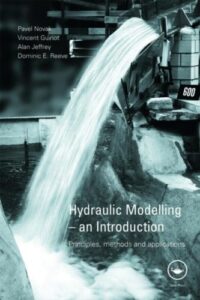Hydraulic Modelling An Introduction Principles, Methods and Applications
Hydraulic Modelling An Introduction Principles, Methods and Applications
Hydraulic Modelling An Introduction Principles, Methods and Applications a vital part of all engineering design, yet many hydraulic engineers are not fully aware of the assumptions they make. These assumptions can have important consequences when choosing the best model to inform design decisions.
Considering the advantages and limitations of both physical and mathematical methods, this book will help you identify the most appropriate form of analysis for the hydraulic engineering application in question. All models require the knowledge of their background, good data and careful interpretation and so this book also provides guidance on the range of accuracy to be expected of the model simulations and how they should be related to the prototype.
You can also Read Sheet Metal Forming Processes and Die Design
Hydraulic Modelling An Introduction Principles, Methods and Applications Content
- Preface
![Hydraulic Modelling]()
- Acknowledgements
- List of main symbols
- Introduction
- Theoretical background – mathematics
- Numerical techniques used in hydraulic modelling
- Theoretical background – hydraulics
- Development of physical models
- Tools and procedures
- Modelling of open-channel systems
- Environmental modelling of open-channel systems
- Modelling of closed-conduit flow
- Modelling of urban drainage systems
- The Modelling of estuaries
- Modelling of coastal and nearshore structures and process
- Modelling of hydraulic structures
- Case studies
- Concluding
- remarks
- References
There are many good books and research papers dealing with some aspects of hydraulic modelling, but – as far as we are aware – there is no single text available combining the various approaches to the subject. Furthermore, our experience from teaching and consulting is that many students and even practitioners tend to use the various computer packages and results from hydraulic models without being sufficiently aware of their background and limitations; hence the decision to prepare this volume.
he reason for this is twofold: first, groundwater modelling, particularly of flow through complicated ground conditions and fissures rocks, is beyond the scope of this text
Download
Hydraulic Modelling An Introduction Principles, Methods and Applications
2nd Link Here


Comments are closed.